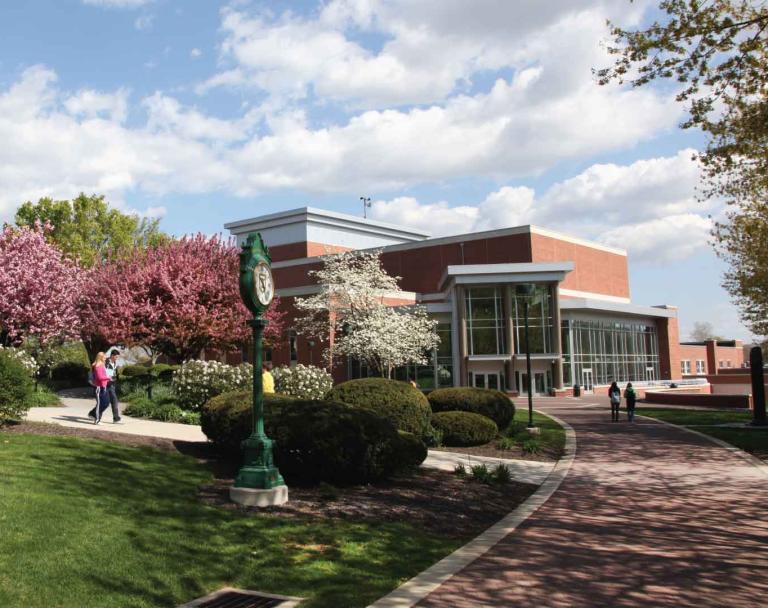Piper Johnson

‘CAN’T STOP CARING’: HOW YORK COLLEGE STUDENTS ARE GIVING BACK IN THE PANDEMIC
The big party was planned. Activities were scheduled, promotions were rolling, and it seemed like the open house at Champion Community Center would be a great success. That was until COVID-19 outbreaks hit Southcentral Pennsylvania.
Two weeks before the event, students at York College of Pennsylvania went home for remote learning. Members of Impact York, a program that gives students who grew up in York County the opportunity to give back to their community by volunteering, were disappointed to see their hard work fizzle in the pandemic.
“We acted really quickly to try to contribute virtual things instead,” says Graham Collaborative Innovation Fellow Piper Johnson ’23. Many York College students recorded themselves sharing children's stories or leading educational activities and posted those online for grade school students to watch.
Still, it was hard to see the community struggle under the weight of the pandemic, Johnson says. “It was going to be tougher to reach people, but we knew we wanted to find ways to keep contributing. We can’t stop caring, especially now.”
COMMUNITY SERVICE AT YCP
It was a constant adjustment for students to transition to remote or virtual community engagement, says Cody Miller, Director of Service Initiatives at York College. He encouraged his students to lean into Design Thinking, which uses empathy-based research tactics to problem-solve. Through some of their exploration, they came up with a variety of solutions for area nonprofits, and many found positive ways to contribute remotely to those who needed support.
One group worked with elementary schools to ask teachers to have their students create homemade greeting cards that could be sent to nursing home residents. Other student groups created more content for the virtual reading project, recording themselves reading and then sharing those videos on social media for teachers and parents to access.
In late summer and early fall, students who had a skill for crafting got busy making masks and distributed them to communities. Many of the masks were delivered to local grade schools.
With the support of a full-time AmeriCorps VISTA member, students in the Generations of Hope program developed a virtual mentoring and engagement model to use with middle school students. Others developed a marketing and outreach plan with Keystone Kidspace, an up-and-coming hands-on education center under construction in downtown York.
Some students also worked independently to find remote volunteer opportunities. The York County History Center needed assistance transcribing oral histories collected on video, so students got to work typing those transcripts.
“I look forward to where these projects can be in-person, on-site, in the community,” Miller says. “We don’t know when that will be. Our first priority is the safety of our students, and we aren’t at that point yet.”
Despite the continued wait, he’s proud of the work students have done to be proactive in community service and how they’ve been able to help nonprofits identify ways they can engage volunteers remotely.
A HEART FOR GIVING BACK
Johnson started volunteering in her local 4-H chapter, which provides mentoring and leadership development opportunities. She remembers adopting a local family around the holidays and delivering Christmas gifts. She volunteers at senior centers, leading activities and visiting older community members. Before the pandemic, she volunteered in Maryland with Sleep in Heavenly Peace, where she helped build bunk beds and provided bedding and mattresses to children in poverty who slept on the floor.
Working with Impact York, she continued the work that was meaningful to her by contributing to her community. When she gathered homemade cards, a little more than 600 made by local elementary school students, and delivered them to area nursing homes, she felt a sense of connection to the people inside. The nurses who accepted the cards were grateful for the small tokens of hope they could share with the residents.
“I feel like I get to reach out to people I wouldn’t otherwise have the opportunity to ever know,” Johnson says. “It’s a great feeling to know something like that has brightened someone’s day. It makes me feel like my role in this community matters.”

